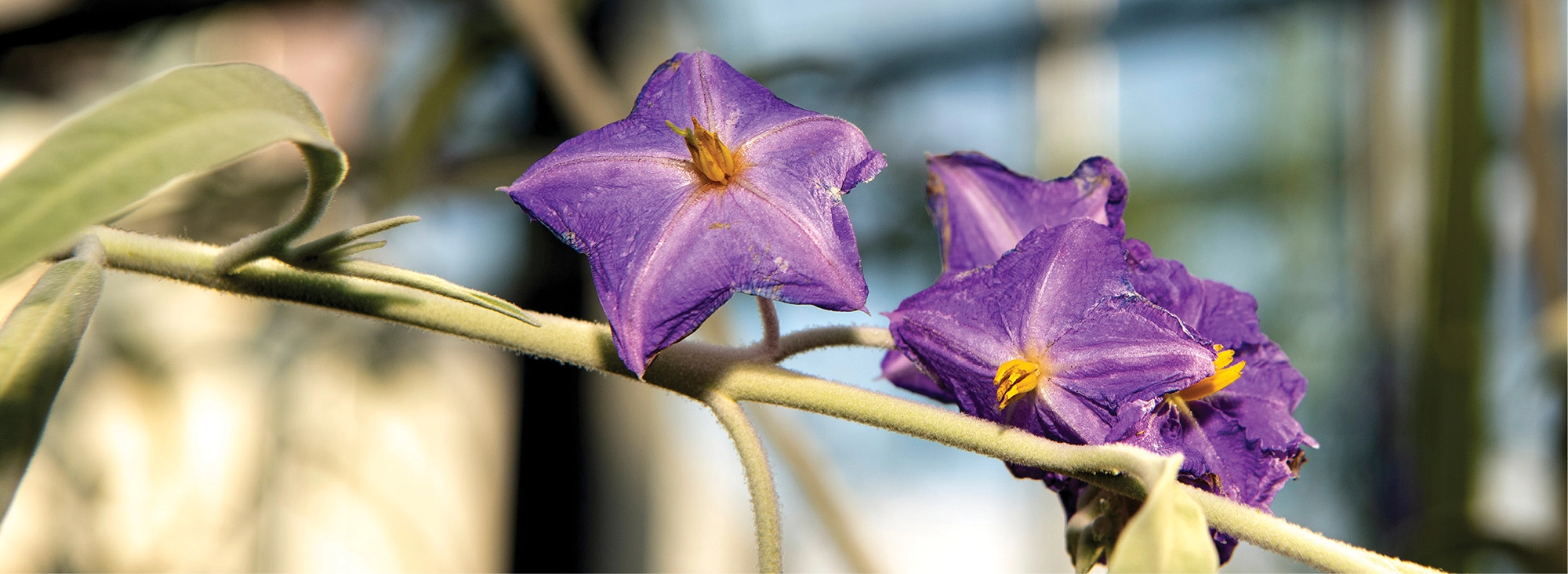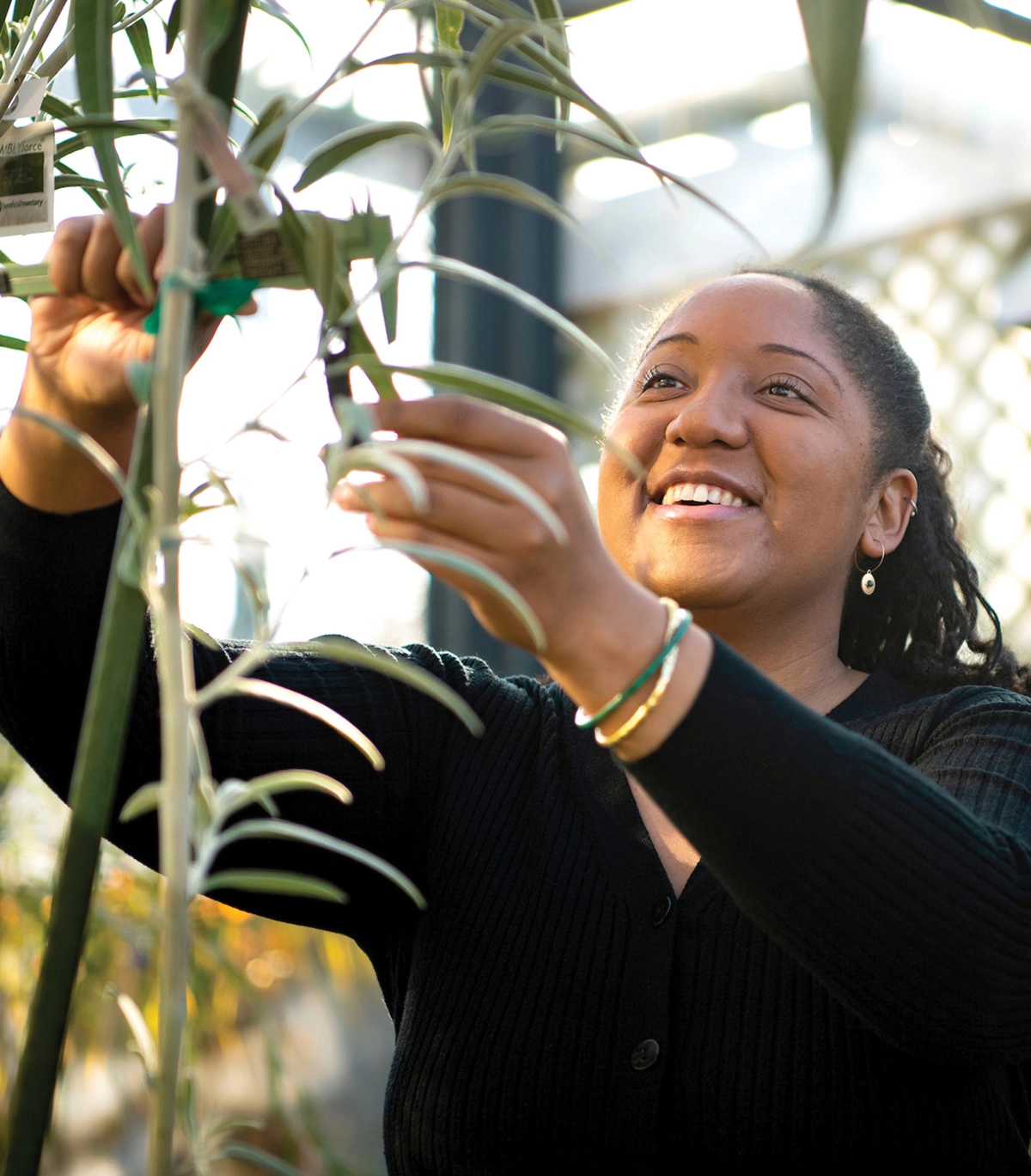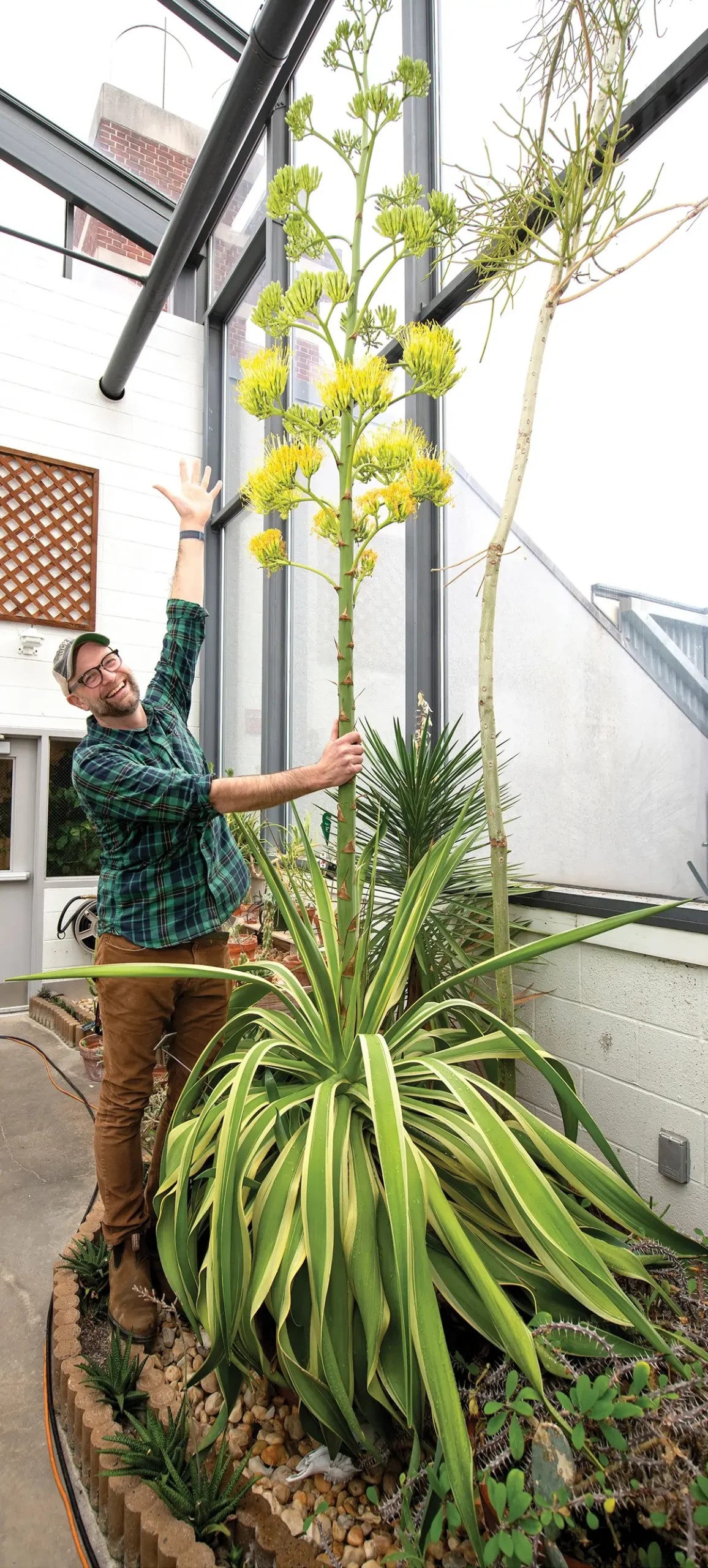
BOTANICAL BUZZ
A Rare Find
While walking through Australia’s remote Outback in 2019, Bucknell biologists spotted an unusual plant. Further study revealed that it was a new, undocumented species of an Australian bush tomato.
The discovery: Chris Martine, David Burpee Professor in Plant Genetics & Research, first found the plant with colleagues on a trip to Judbarra National Park in 2019. Back in Lewisburg, Martine gave seeds collected from the specimen to Tanisha Williams, Richard E. and Yvonne Smith Post-Doctoral Fellow in Botany, and Jonathan Hayes ’21, who led in the care and study of the offspring used to confirm the new species.
The find: Martine happened upon the exotic plant along a steep trail near a set of stone steps. Inspired by that spot and the ladder-like prickles that adorn the plant’s flowering stems, he and his colleagues selected the name Solanum scalarium. In Latin, “scalarium” translates to “ladder,” “staircase” or “stairs.” Solanum is the largest genus in the nightshade family and includes potatoes, eggplants and tomatoes.
The buzz: In December, the team’s new-species description was published in the journal PhytoKeys, with Hayes included as a co-author. The discovery quickly generated headlines: National Geographic, ABC News, Yahoo! News and numerous scientific publications picked up the story. And in February, Williams discussed the discovery as a guest on NPR’s Short Wave podcast.
The reward: Martine, who has been exploring the Australian Outback for nearly two decades and has found 10 new species of plants, thrives on the excitement of making new discoveries in the natural world. “Each time, it’s like a dream come true,” he says. “It’s also an incredible message for both the public and my students — that if you learn about biodiversity, you will find there are many things, literally millions of things, left on the planet that we don’t know about.”
Behind the Headlines


Buzz Worthy
A Rare Bloom
For more than two decades, Bucknell has been home to a special plant famous for blossoming only once in its lifetime, just before it dies. In late 2022, Bucknell’s very own Agave americana performed its grand finale, sprouting yellow flowers that created excitement across campus — and beyond.
The plant: Originally thought to live 100 years, Agave americana was nicknamed the Century Plant. In actuality, it blooms at the end of a 25- to 30-year life (still an exercise in patience for its caretakers). Over that period, the flowering stalk can grow to a towering six feet tall. Once it develops its flowering branches, it becomes visually dramatic, stretching as far as 10 feet wide.
The caretakers: Bucknell’s Century Plant has lived in the Rooke Science Center green-house under the watchful eyes of several generations of nurturers, including Tasha Hall ’07, Bucknell’s current greenhouse caretaker. Hall notes that the plant thrives in arid, warm, sunny conditions. The real key to its care, she says, is showing restraint when watering it. Once a week is sufficient, and a well-draining soil is critical.
The hype: Hall and biology professor Chris Martine first noticed buds in mid-December – less-than-ideal timing, as campus was clearing for winter break. To ensure people wouldn’t miss the plant’s final act, Hall worked with Library & Information Technology to set up a livestreaming camera, which also enabled alumni and community members to watch the blooms’ progress. Local news outlets paid visits, further spreading the word. When faculty and staff returned to campus in early January, the greenhouse became a popular destination for visits — and selfies — with the plant. “The reaction on campus has been extremely positive,” Hall says. “It’s attracted people to the greenhouse who aren’t typical visitors, and I’ve received many emails from people who want to learn more about the plant.”
The future: Before the celebrated plant died in February, it produced several offshoots. Hall replanted them and is now caring for those so-called “pups” so future generations of Bucknellians can watch them grow and, hopefully, one day flower. “It feels special to carry on the legacy of others who have cared for this plant,” Hall says. “I’ve enjoyed learning more about it and seeing people get excited about this rare beauty.”

